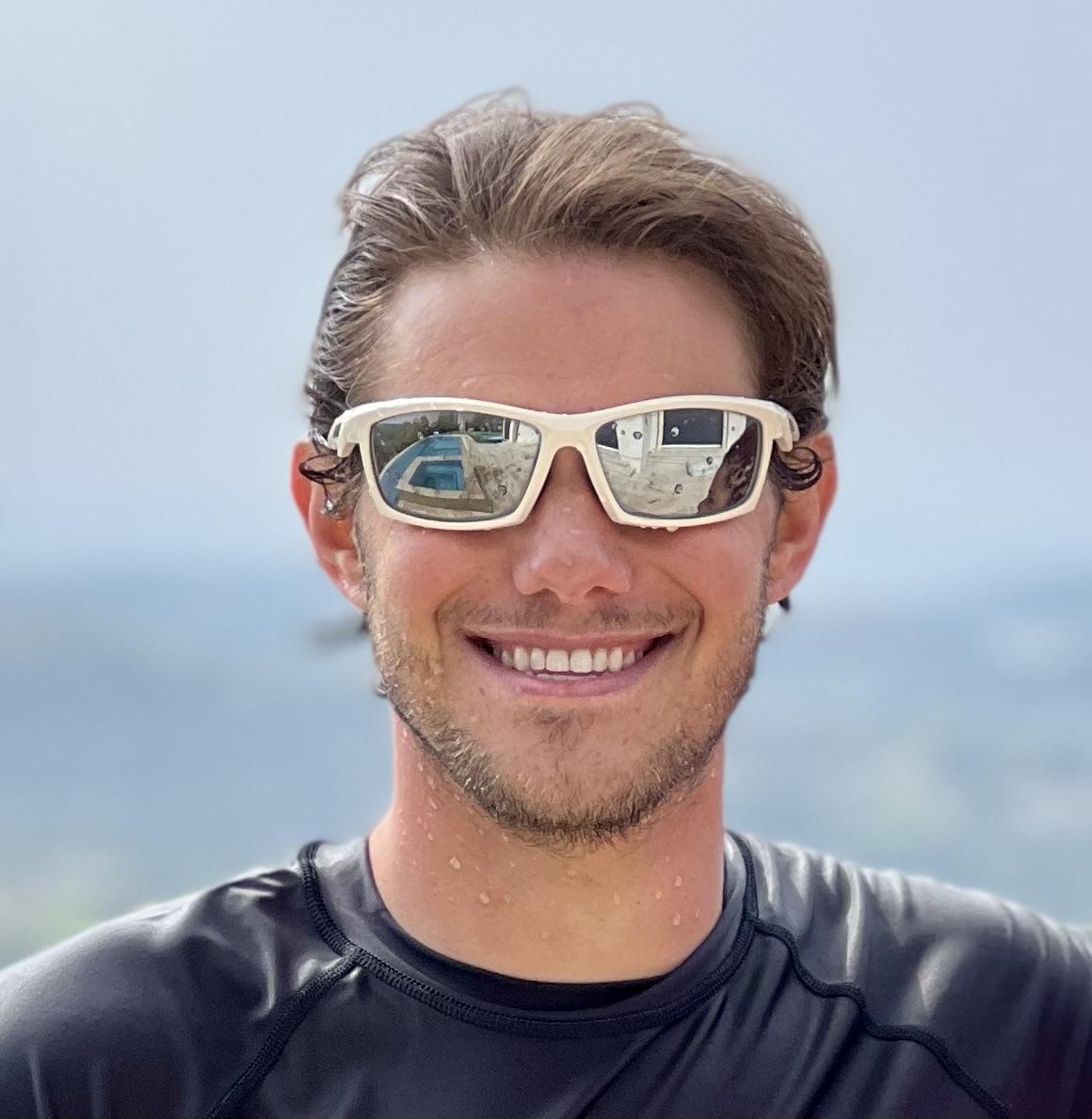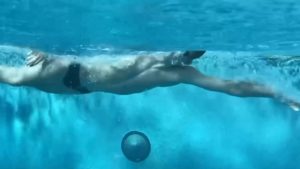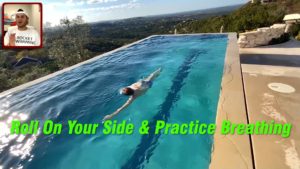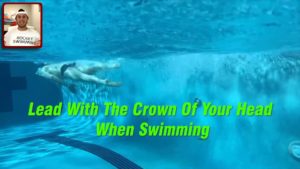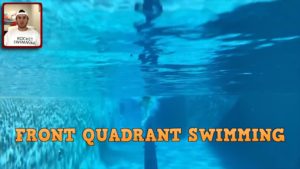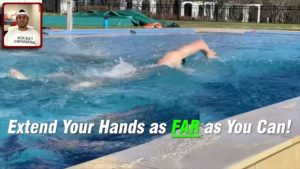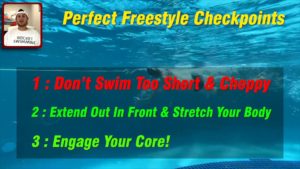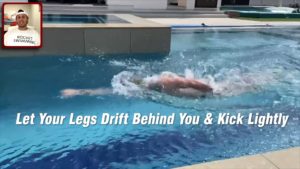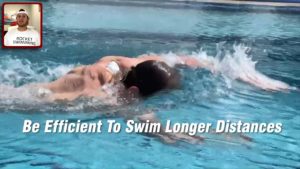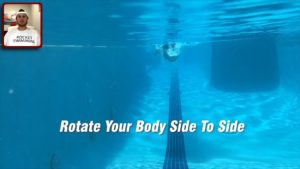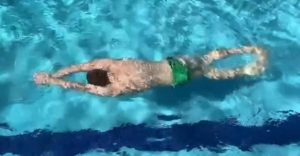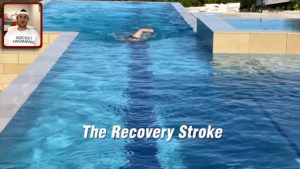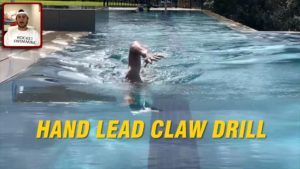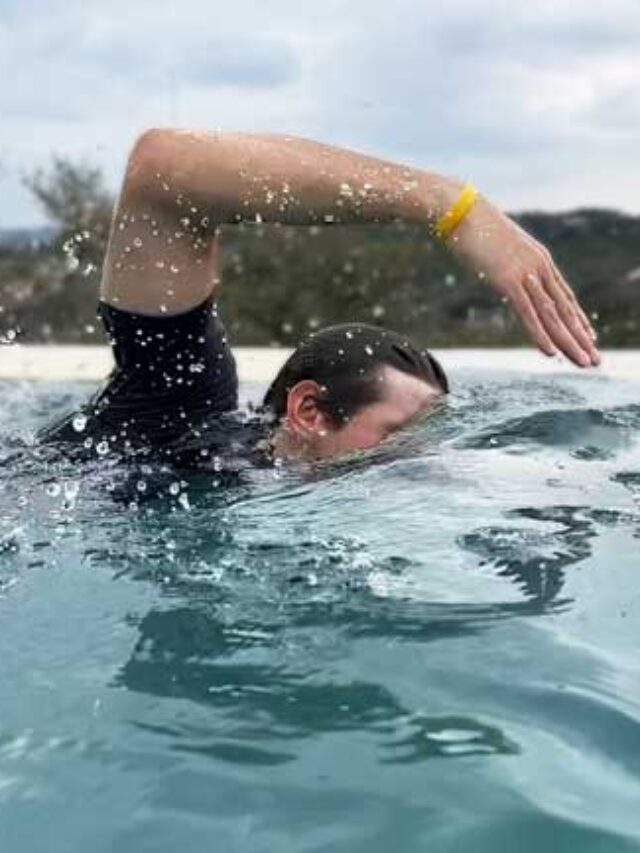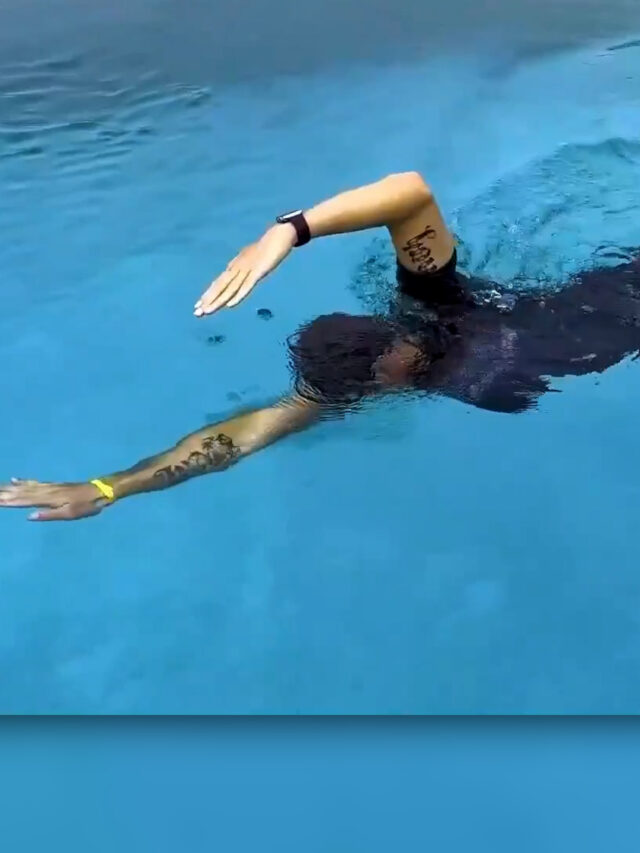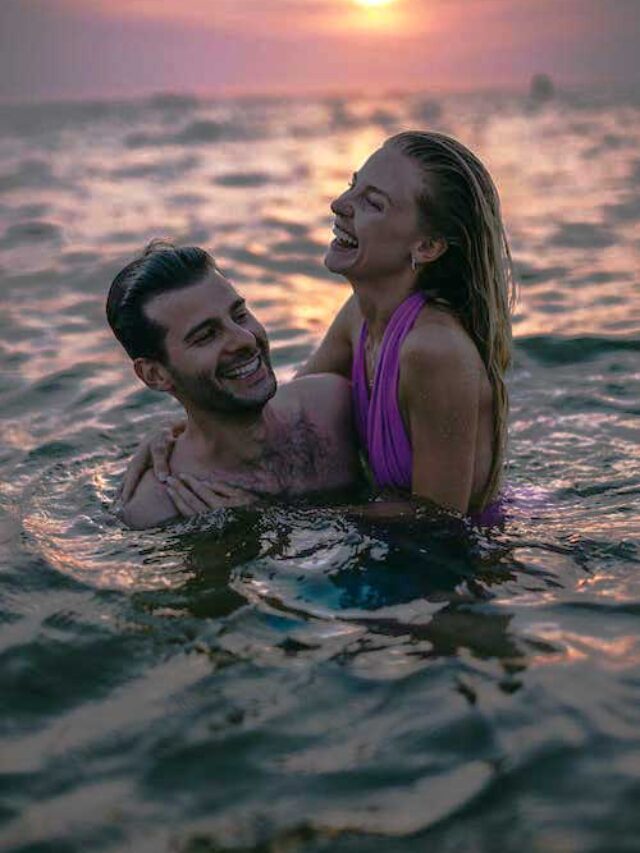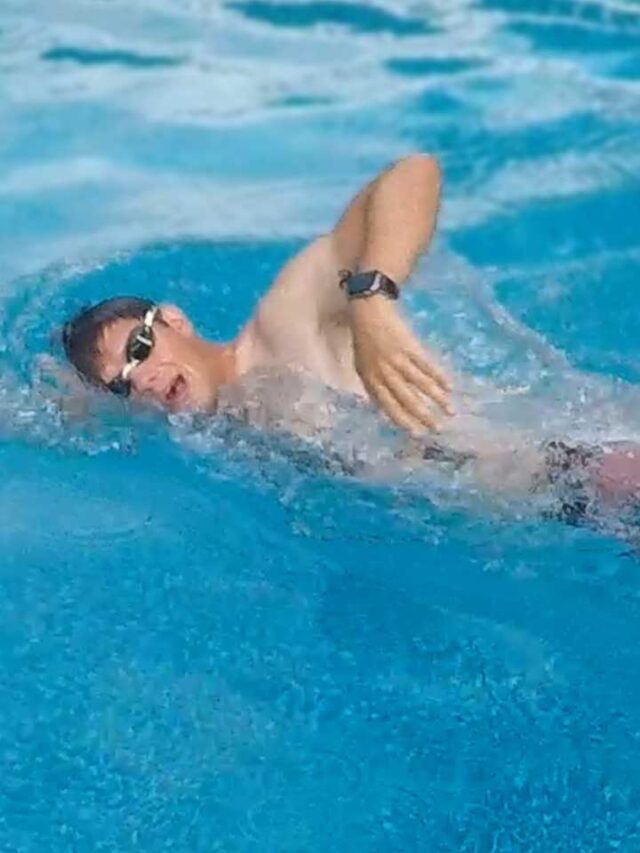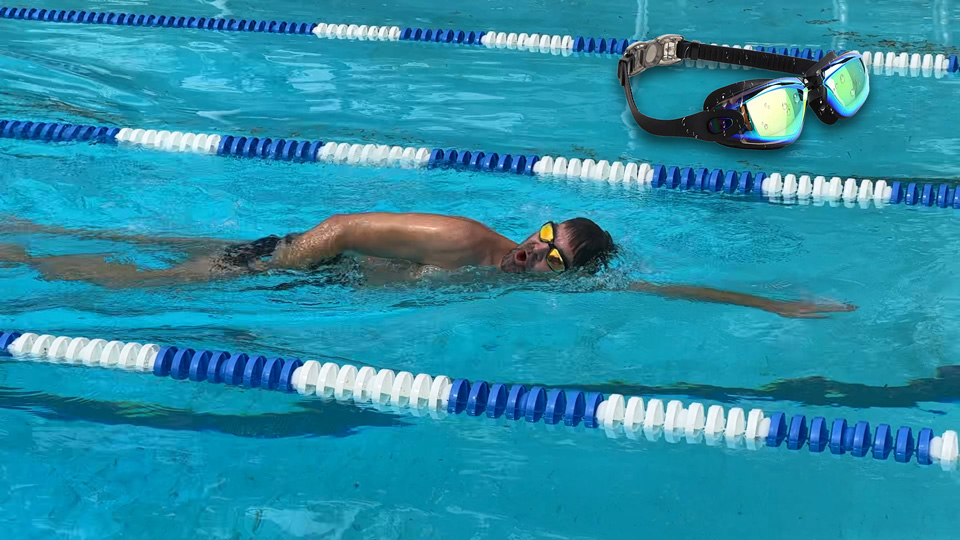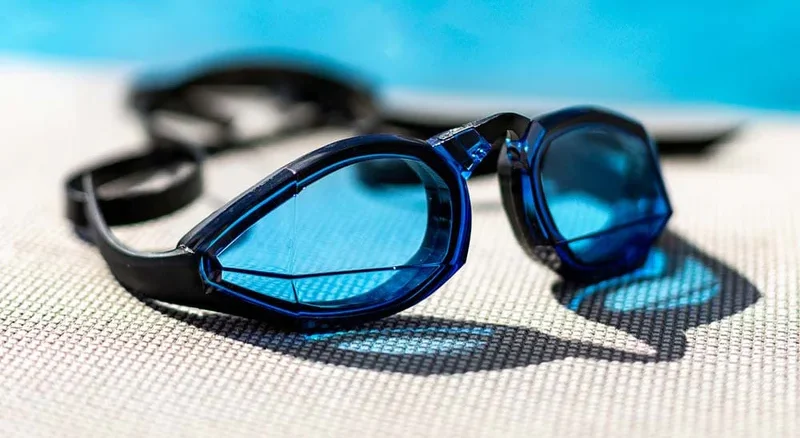How To Swim Perfect Freestyle
Hello rocketeers, in this blog post you will learn the perfect freestyle swimming technique.
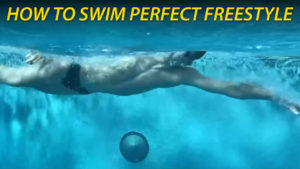
Our demonstrator is Parker who’s one of the best athletes in his age group in the entire United States of America. He’s so good because his technique is nearly flawless. Achieving flawless technique will take time and practice. You should follow the techniques below and practice daily to achieve the perfect freestyle technique.
If you have any questions regarding any swimming technique, feel free to contact us here.
Perfect Freestyle Breathing Technique
We’ll start with breathing because it’s the most important part of any stroke. The proper breathing technique will take time and practice so follow the instructions exactly and practice daily.
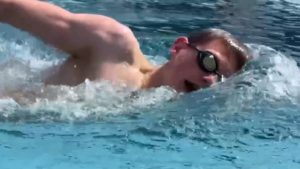
When taking a breath in freestyle, breathe to the side and slightly behind you.
In the above image, we can see the swimmer tilt his forehead down into the water in order to lift his chin out of the water to breathe.
Far too often, beginners lift their heads forwards, up, and maybe a little bit to the side for their breath. Never look forward and up.
Always breathe to the side and slightly behind you – not to the side and in front.
I like to start beginners off by learning the pineapple technique. Roll all the way onto your back for your breath. Once you’re good with back breathing, then roll all the way to your back extending one hand above your head the entire time. Keep both hands in the water like the swimmer below until you’ve caught your breath.
Once you’ve mastered that, practice the half pineapple where you roll only onto your side and breathe as much as you need to, keeping one arm extended. After mastering this technique, roll only to your side with one arm extended and take one breath and close the window. Practicing this technique will help you breathe to the side like a pro in no time.
Lead with the crown of your head when you swim. Never lead with your forehead because it’ll cause resistance and your legs will sink.
Tilting the forehead down and looking just a little bit forward will increase your speed and and improve your balance in the water. Keep your chin tucked and stretch your spine until the back of your neck is smooth. If you’re going to look forward at all, use your eyeballs that roll independently inside your skull.
Note: High Head Position Causes Sinking Legs
A high head position will cause your legs to sink down into the water. Leading with the crown of your head and keeping your head lower in the water will lift your legs higher. Our body is like a seesaw. When our head goes down, our legs come up in the water. That’s why it’s better to keep your head more underwater than it is out.
Front Quadrant Swimming
When swimming freestyle, keep one hand in front of your head at all times. This is called Front Quadrant Swimming.
Front Quadrant Swimming allows your body to balance in the water bringing your legs higher.
Wait for the other hand to catch up before taking your next stroke. If you swim like a windmill or with your hands “in your pockets,” then you’re going to get stuck and have no control. Your legs will sink from this as well.
Extend your hands as far as you can in front of your head on every stroke. This’ll lengthen out your spine in the water. The taller you swim the more natural speed and balance will come to you in the water.
Another reason it’s good to be tall in the water is that your core engages the longer your bodyline.
Following are the checkpoints that should be followed when swimming freestyle.
Perfect Freestyle Checkpoints
1: Don’t Swim Too Short & Choppy
If you swim too short and choppy, then you’re not really using your core – just your limbs which fatigue quickly.
2: Extend Out in Front & Stretch Your Body
Extending out in front and stretching your bodyline in the water on every stroke by reaching your fingertips in front and reaching your toes out back will engage your core and provide a much smoother, faster freestyle.
3: Engage Your Core!
Perfect Freestyle Kicking Technique
With the proper kicking technique, you can swim like professional swimmer without getting tired so fast.
You don’t need to kick as hard as you can. Often times our legs will do as much kicking as they need to if we just let them drift behind us. Always remember to kick lightly. Instead of only kicking the water down, you should also flip the water up with the bottom of your feet. That’ll be a nice, steady, 4-6 beat kick!
The natural rotation of your body in the water is going to keep your legs kicking. Some beginners get really tired when they swim because they kick too hard. Don’t drive your legs so aggressively!
Kicking too fast is going to slow you down over time because you’re going to burn out quickly.
Efficient Swimming
If you’re learning to swim or swimming for exercise, focus on lasting longer instead of quicker bursts. Swim as long as you can, as fast as you can. Conserve your energy on longer workouts – the longer the swim, the more efficient you’ll need to be. You can go faster if your swim distance is shorter.
Breathing every 2 strokes is best for an efficient swimming technique. You can also breathe every 3 or 4 strokes, but breathing more than 4 strokes per breath is not recommended. Breathing every 2 strokes ensures you get enough oxygen to your muscles to keep them firing properly.
Tip: Breathing a pattern of 2 strokes will help you swim longer without feeling the burn in your lungs and muscles.
Rotate your body from side to side. When you roll all the way to your side on one stroke, you should extend both arms in opposite directions to grab more water.
A body on its side is more hydrodynamic than a flat body in the water.
The Recovery Stroke
On the recovery portion of each stroke, one shoulder will peak above the water. Even your armpit should float above your ear on the same side.
Land your hands in front of your head on every stroke. You’ll become more hydrodynamic because your hand is shaped more like an arrow than your head. When your hand enters the right front of your head and extends out front, it will displace the water around your body so your vessel (body) slips right through.
Early Vertical Forearm / High Elbow Catch
You’re always traveling in the direction of the back of your hand, so when it’s time to pull, start catching the water by pointing your fingertips down while maintaining a high, sturdy elbow! This is known as an early vertical forearm or high elbow catch.
Hand-Lead Claw Drill is the hardest drill in freestyle but is consequently the most beneficial.
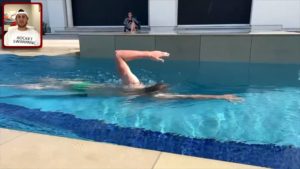
Extend one hand out in front while the other arm hangs above your head like it’s frozen in the middle of its recovery. This is also called The Sail Boat Drill because your elbow looks like the main sail on a boat.
Tip: Wearing fins when practicing will help you learn to swim faster.
Watch the following video to learn the perfect freestyle technique.
Related Freestyle Technique Blog Posts
Drills to Improve Your Freestyle Swimming
Freestyle Kick Improvement Tips
Three Tips To Improve Freestyle Swimming
Tips to Improve Your Freestyle Breathing
Improve Your Freestyle Swimming
What is Freestyle Swimming Stroke?
Related Freestyle Technique Videos
